Orchid vanda is a tropical epiphyte. Today, it is commonly cultivated as an ornamental plant in many places as it is relatively easy to grow and care for. Learn simple techniques to grow and care for orchid vanda for beautiful blooms all year round in the article below.
1 Introduction to Orchid Vanda
Orchid vanda originates from the Asia-Pacific region and is widely cultivated in several countries such as China, Laos, and has been popular in Vietnam for quite some time. There are about 45 types of orchid vanda in the world, 5 of which are commonly grown in Vietnam: Vanda concolor, vanda lilacina, vanda liouvillei, vanda pumila, and vanda denisonaliana.
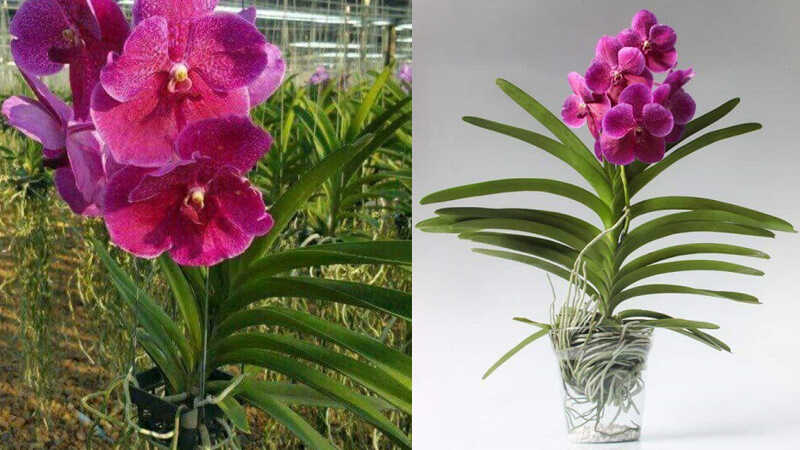 Image of Orchid Vanda
Image of Orchid Vanda
Among the five species, Vanda denisonaliana is the most favored due to its aesthetic appeal and long-lasting blooms. Orchid vanda is predominantly grown in Lam Dong province as it thrives in the region’s cool climate.
The orchid vanda’s unique stem features dense clusters of symmetrical, fan-like leaves. Each leaf is approximately 25cm long, tapering to a point. Orchid vanda blooms in stunning clusters with a variety of colors. Each flower has three pairs of symmetrical petals. The petals are thin yet durable, typically lasting for about a month before wilting.
2 Types of Orchid Vanda and Their Characteristics
While there are numerous varieties of orchid vanda, they can be primarily categorized into six main types: Vanda tricolor, Vanda cristata or Trudelia cristata, Vanda denisoniana, Vanda amesiana or Holcoglossum amesiana, Vanda pumila or Trudelia pumila, and Vanda alpina or Trudelia alpina.
Additionally, orchid vanda can be further classified into two groups: Hybrid Vanda and Forest Vanda.
Vanda tricolor
This variety of orchid vanda typically grows on tree branches or near the base, reaching a height of less than one meter. Its leaves are about 40-50cm long. The flower clusters emerge from the leaf axils, measuring around 25-35cm in length. The flowers are white with purple-brown spots or stripes and usually bloom in the summer, lasting for an extended period. Notably, from around 9-10 am until evening, the flowers emit a pleasant fragrance.
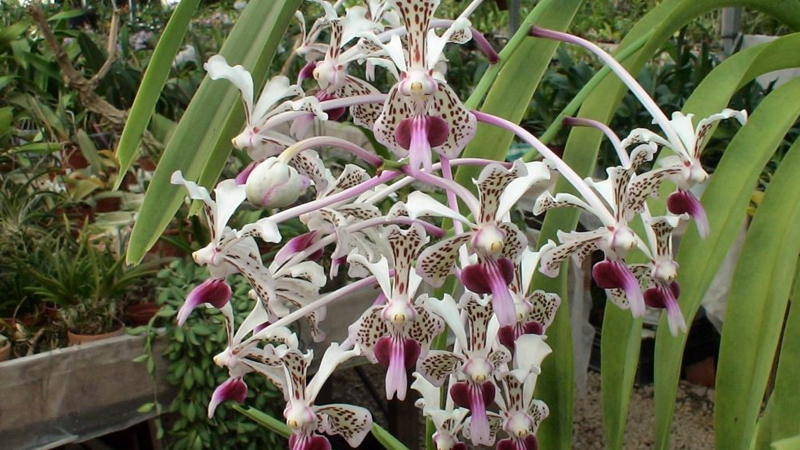 Vanda tricolor
Vanda tricolor
Vanda cristata (Trudelia cristata)
This orchid species has a medium size and is commonly found in India, Tibet, and China, typically growing at altitudes between 600 and 2300 meters. The plant grows to a height of about 25-30cm, with short flower clusters appearing below the leaves. The petals are green, thick, and rigid. The lip is cleft at the base.
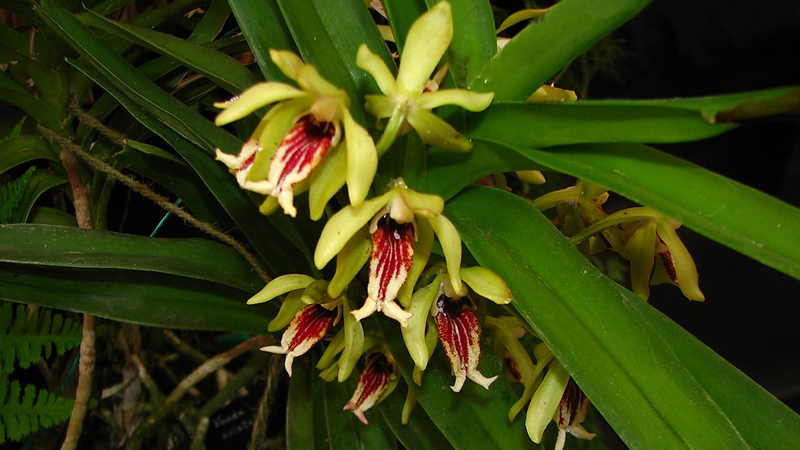 Vanda cristata
Vanda cristata
Vanda denisoniana
Denisoniana can grow up to nearly one meter in height, with leaves growing on both sides, reaching a length of 30-40cm. The flowers blossom in clusters of 5-8 blooms in the leaf axils. They are lemon-yellow in color and usually bloom in spring or early summer. The fragrance of these flowers is similar to vanilla and becomes noticeable in the evening twilight.
 Vanda denisoniana
Vanda denisoniana
Vanda amesiana or Holcoglossum amesiana
This species resembles vanda in its stem and leaves but has flowers similar to Holcoglossum, hence the dual naming. The plant grows to a height of about 20-40cm, with leaves measuring 20-25cm in length. It blooms in the winter in various countries, including Myanmar, China, Cambodia, and Vietnam.
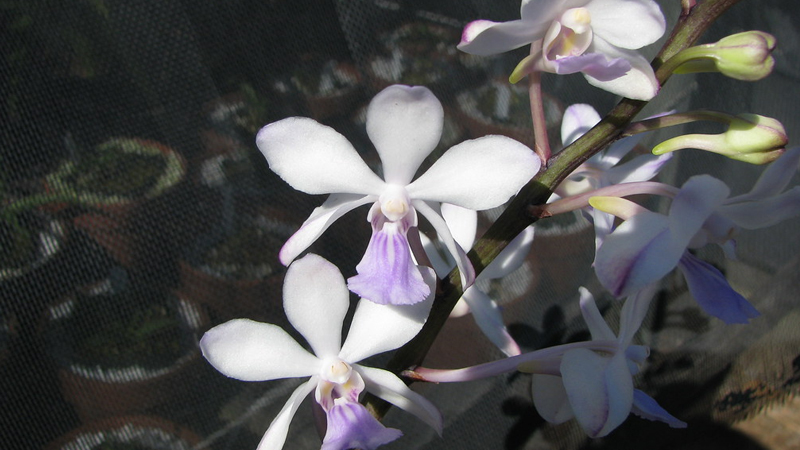 Vanda amesiana (Holcoglossum amesiana)
Vanda amesiana (Holcoglossum amesiana)
Vanda pumila or Trudelia pumila
Vanda pumila is a small species found in many Asian countries. It grows to a height of 20-30cm, with leaves about 12cm long. The flowers are white or light green. Pumila is also affectionately known as Lan Uyen Uong because it often bears two flowers on one stem.
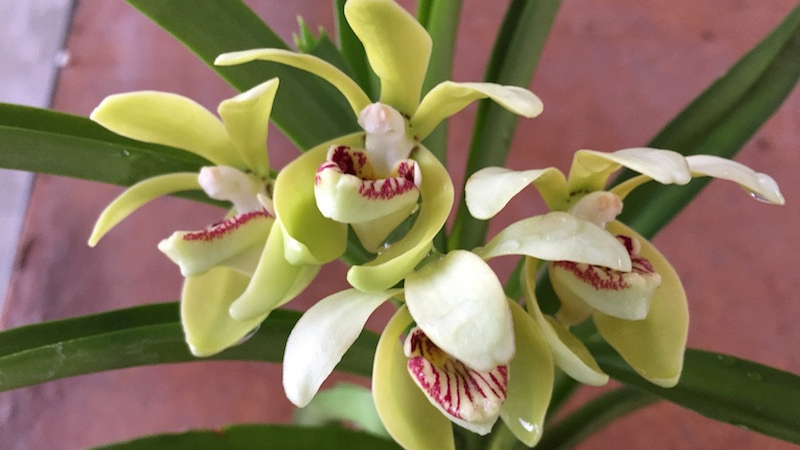 Vanda pumila or Trudelia pumila
Vanda pumila or Trudelia pumila
Vanda alpina or Trudelia alpina
Alpina has a stem height of about 20-25cm. Each stem bears two to three flowers that bloom in late spring. The petals are dark green, and the lip is triangular with a deep brown color.
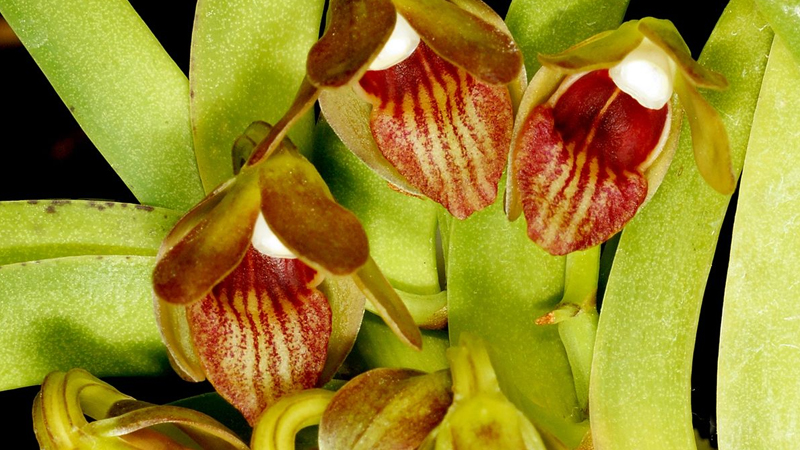 Vanda alpina (Trudelia alpina)
Vanda alpina (Trudelia alpina)
3 Symbolism and Meaning of Orchid Vanda
Orchid vanda, with its variety of colors and unique flower shapes, exudes elegance, luxury, and a touch of wilderness. Generally, orchid vanda symbolizes love, beauty, purity, understanding, and more.
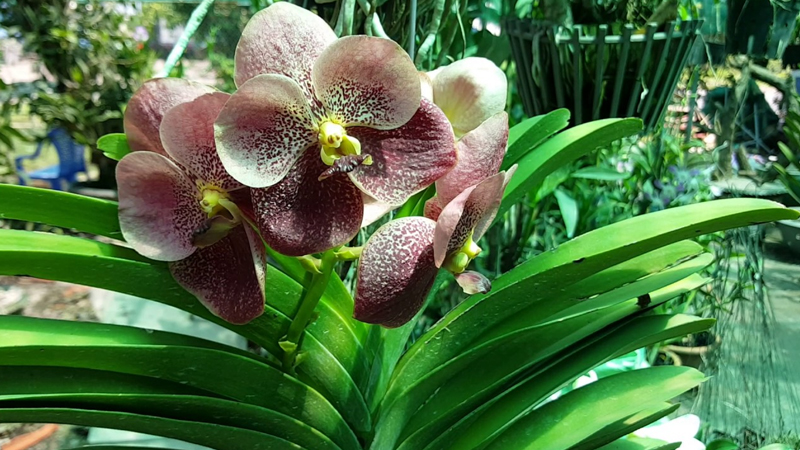 Orchid vanda symbolizes love, purity, understanding, and more.
Orchid vanda symbolizes love, purity, understanding, and more.
Moreover, each color of orchid vanda conveys a distinct meaning. Purple orchid vanda represents fidelity and devotion, making it an ideal gift for couples on special occasions. Green orchid vanda, on the other hand, symbolizes passionate love that transcends spatial and temporal boundaries.
4 Practical Uses of Orchid Vanda in Daily Life
Given its graceful beauty and pure symbolism, orchid vanda is an excellent choice to enhance the aesthetics of your living space.
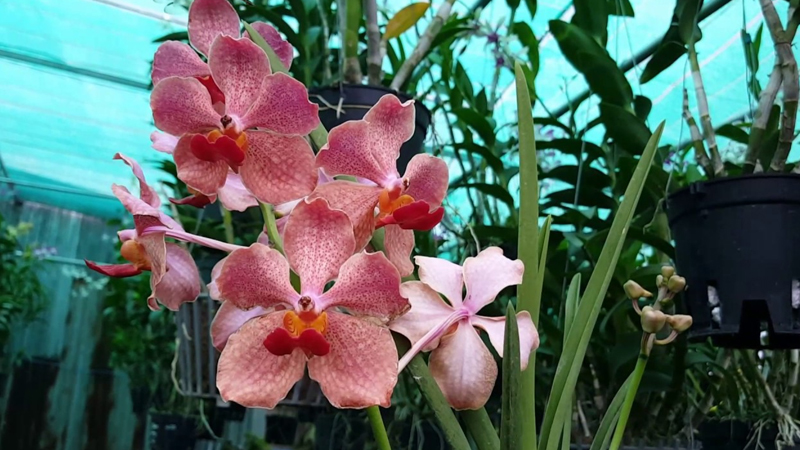 Orchid vanda adds beauty to your garden
Orchid vanda adds beauty to your garden
Thanks to its diverse colors and styles, orchid vanda is a meaningful gift option for mothers, teachers, or loved ones. It is also a popular choice for important events and occasions due to its regal and luxurious appeal.
5 Techniques for Growing and Caring for Orchid Vanda
Growing Techniques
Growing orchid vanda is not overly complicated, but certain techniques can promote better growth and more vibrant blooms. You can start with a young plant purchased from a nursery.
Firstly, provide a stable and sturdy foundation for your plant. A recommended soil mix is tree bark chips along with a bit of moss to enhance nutrient absorption. Additionally, incorporating clay or charcoal chunks can improve drainage.
 Techniques for growing orchid vanda
Techniques for growing orchid vanda
When planting in a pot, add ferns of similar length to encourage the development of aerial roots. Then, place the plant in a container so that the stem and roots are not submerged in the mixture.
As the plant grows, transfer it to a larger pot, usually in the spring. Clay pots are recommended for better drainage and increased air circulation. When the plant stops growing, cut off the offshoots for propagation.
Care Techniques
-
Growing Media for Orchid Vanda: Orchid vanda experiences leaf shedding due to changes in humidity during its growth cycle. Excessive moisture can lead to root rot. It is best to maintain a well-aerated growing medium by using coconut husks or wood chips along with large charcoal pieces.
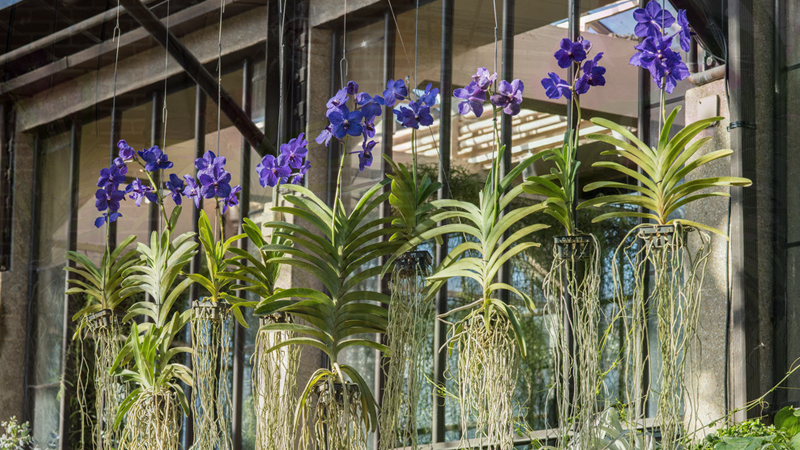 Growing media for orchid vanda
Growing media for orchid vanda
-
Temperature and Humidity: Orchid vanda thrives in temperatures ranging from 25-30 degrees Celsius. Remember to maintain consistent humidity for the plant. As it grows year-round, even a brief period of drought or sudden temperature change can cause leaf shedding.
- Watering: Water the plant twice a day regularly from May to November and three times a day from December to April of the following year. Temperature and humidity also influence flowering. Orchid vanda blooms year-round, but more profusely during the sunny season when air temperatures are highest.
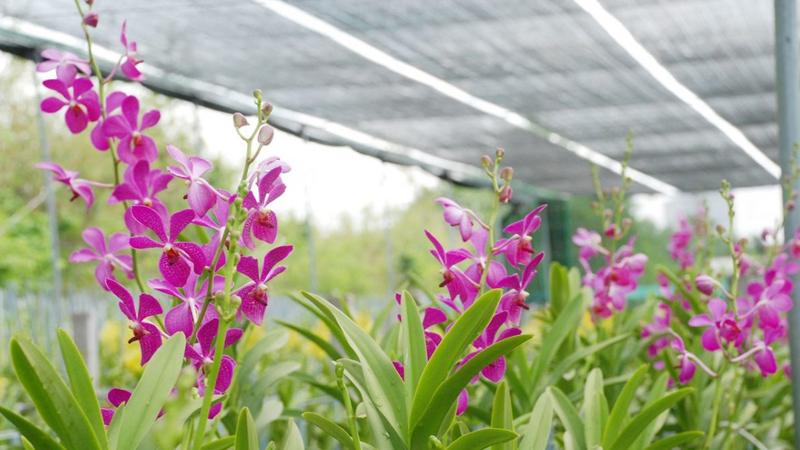 Caring techniques for beautiful blooms
Caring techniques for beautiful blooms
-
Light: Orchid vanda thrives in bright, sunny conditions, so place it on a balcony or an area that receives ample sunlight.
-
Fertilizer: Orchid vanda is considered a nutrient-demanding plant, so fertilization is essential. You can use any type of fertilizer. For convenience, consider a 3-10-10 floral fertilizer, applied twice a week at a concentration of one teaspoon per four liters of water.
6 Where to Buy Orchid Vanda and Price Range
You can purchase orchid vanda from local flower shops or online marketplaces like Lazada and Shopee. The price typically ranges from under VND 500,000 per pot, depending on the variety. You can also buy seedlings at a lower cost of around VND 50,000.
We hope this article has provided you with valuable insights and a deeper appreciation for orchid vanda. Choose the variety that resonates with you and adorn your home or gift it to your loved ones to spread beauty and joy.
Discovering the Delicious Flavours of Vietnam’s Varieties of Durian
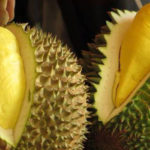 Vietnam’s Varieties of Durian’>
Vietnam’s Varieties of Durian’>Discover the best available durian varieties today! From creamy custard-like taste to robust, nutty taste, we provide the finest durian suitable for every palate. Get the ultimate durian-eating experience at the most competitive prices!





































